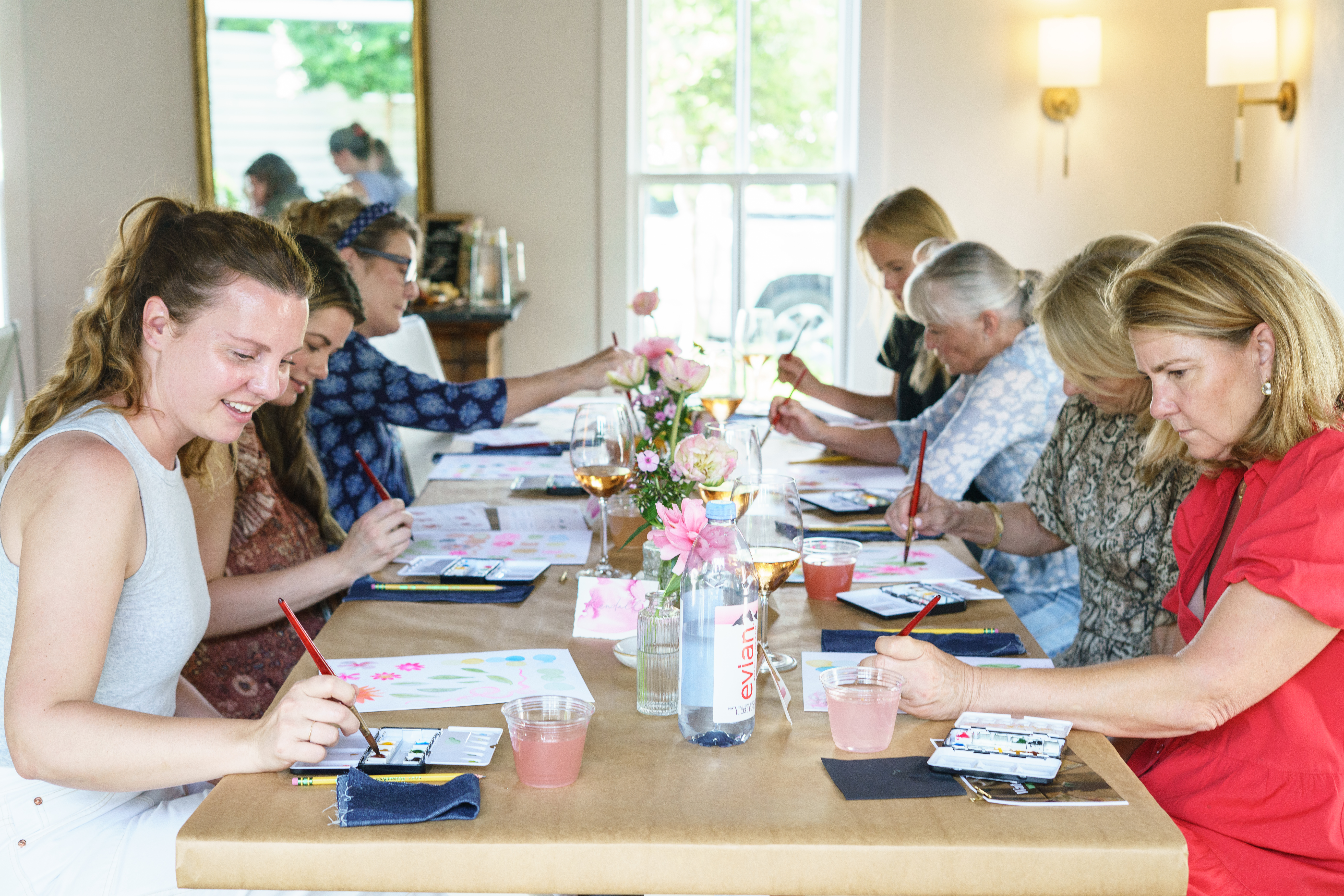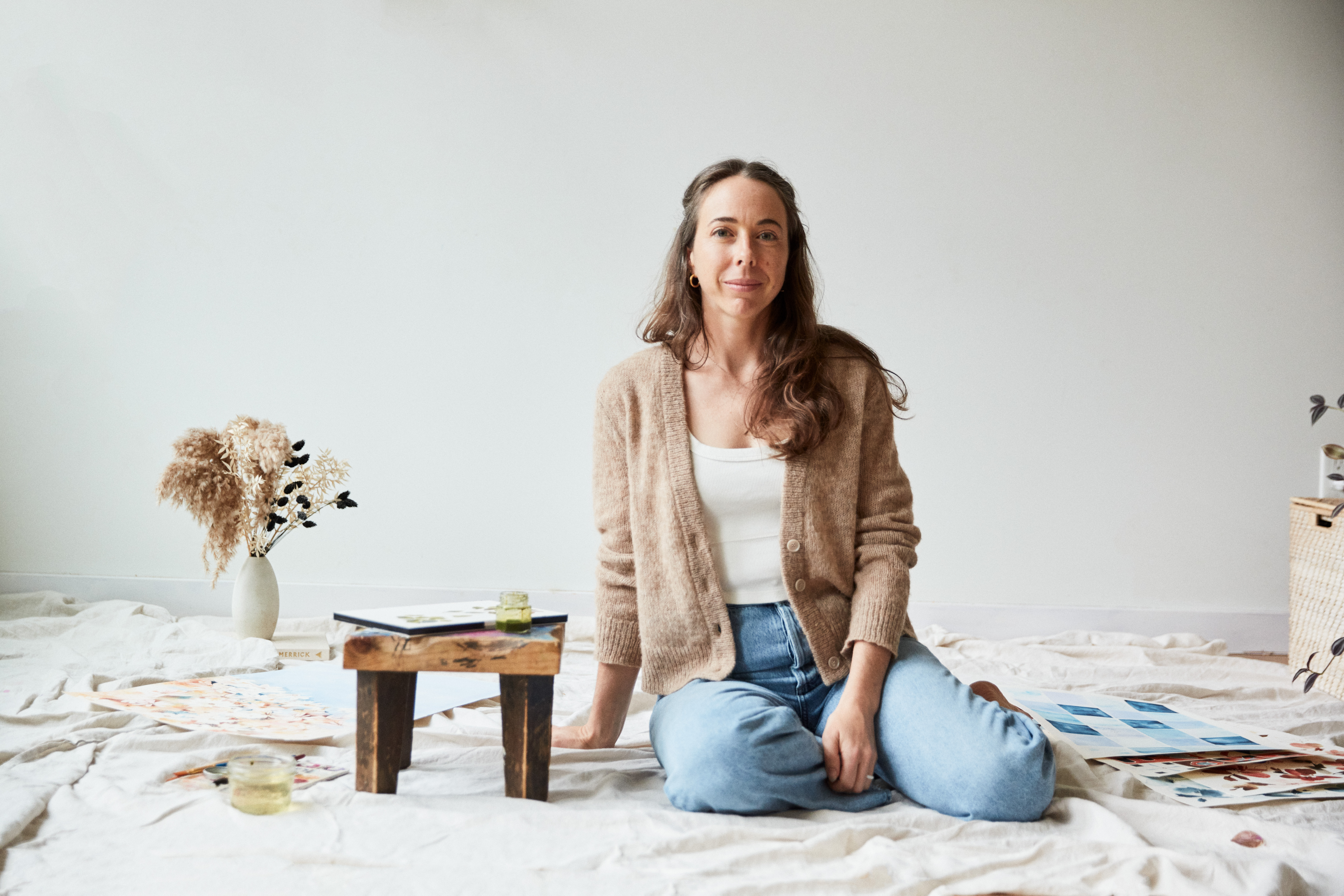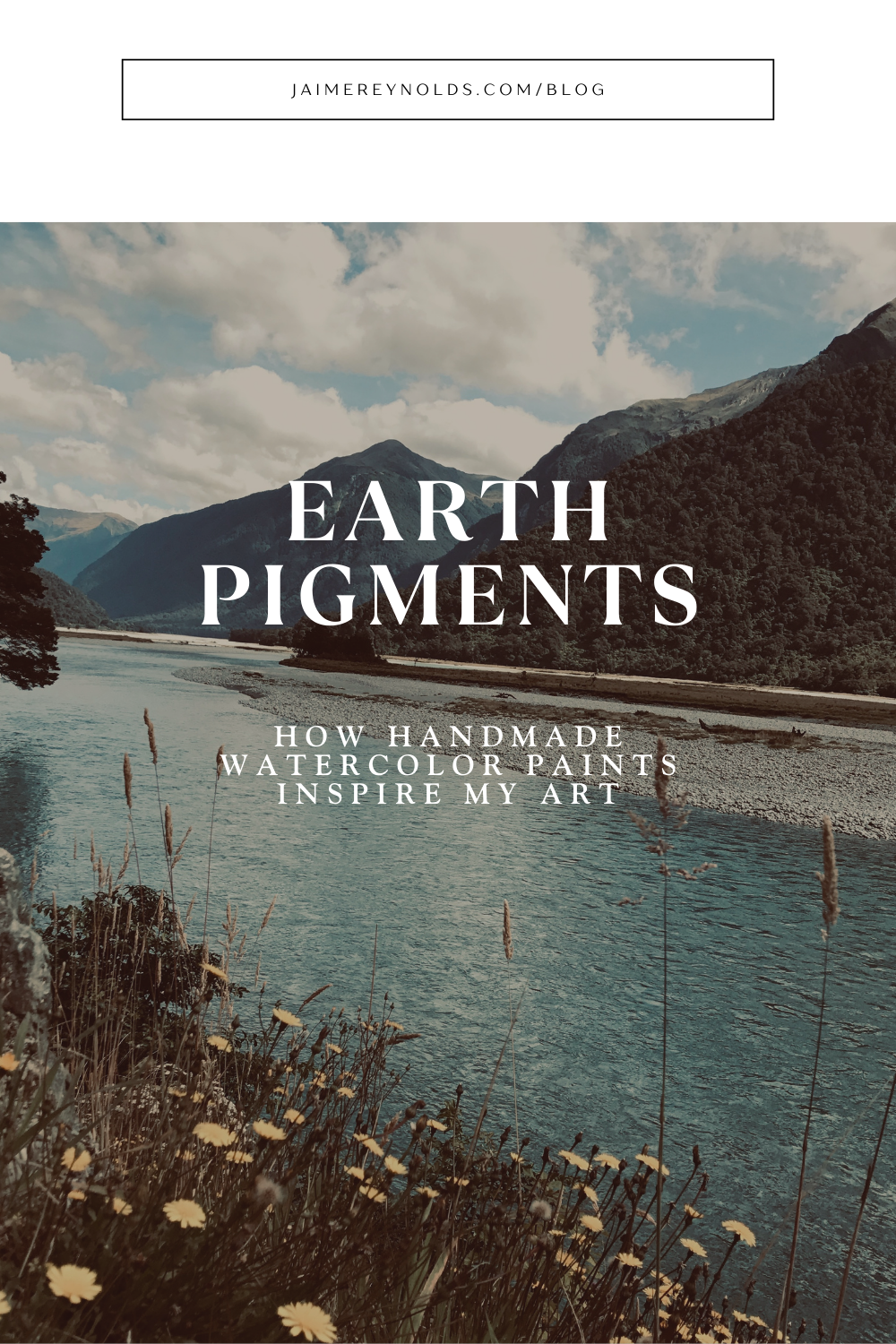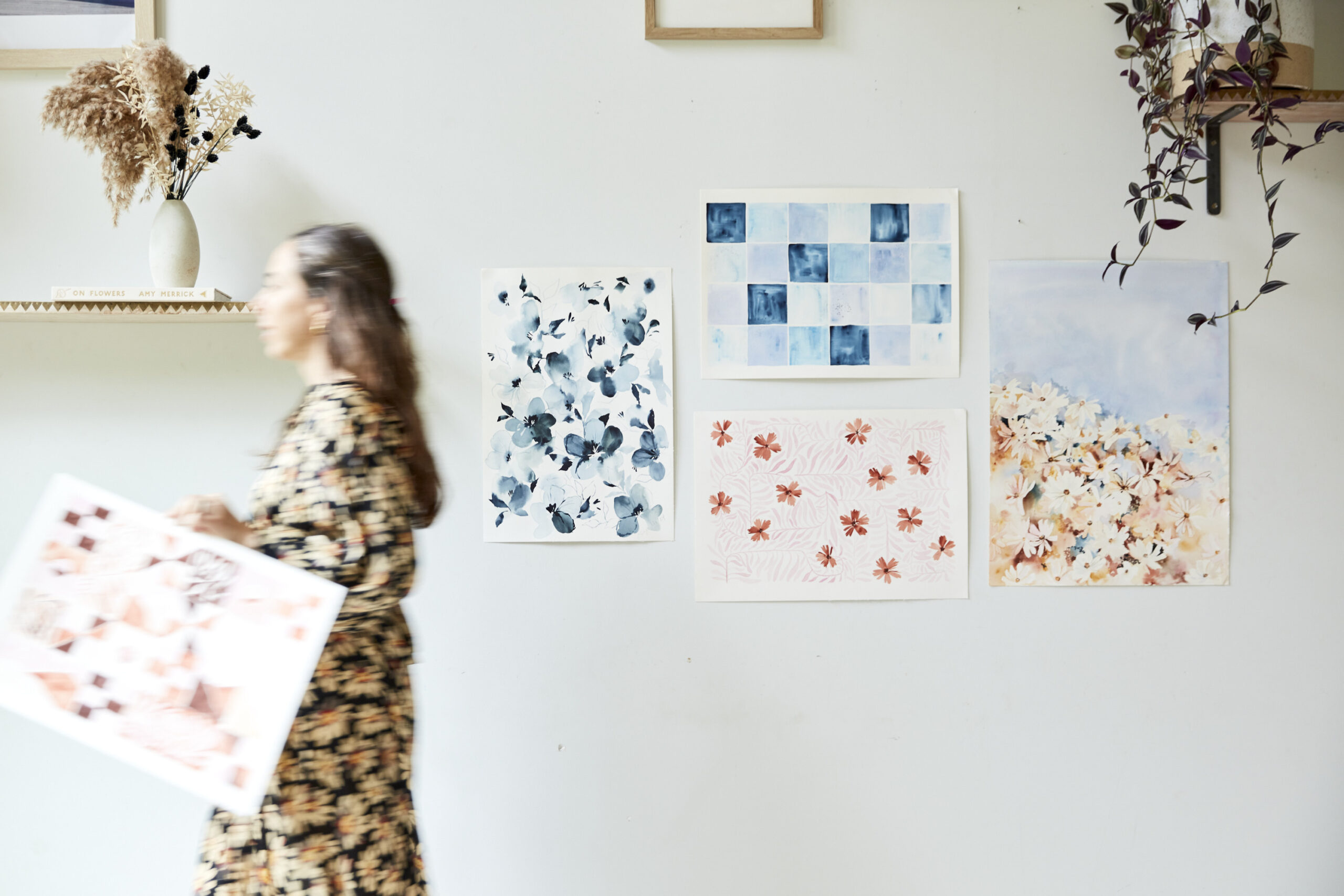One of the most popular subjects for watercolor painting is … *drumroll please* … loose watercolor flowers! This should come as little surprise, considering that watercolor and florals are a match made in heaven. Florals look ethereal in any art medium (they’re just that picturesque), but I find that watercolor is perfect for capturing their eye-catching colors, subtle nuances, and delicate petals on the page.
And if you follow my work, then it’s no secret that flowers are one of my absolute favorite subjects to paint both in my solo creative time and in my watercolor workshops. (I mean, who doesn’t like to paint flowers?!) Not only are flowers gorgeous to look at, but they offer the unique opportunity to paint something beautiful without the pressure of being perfect since nature’s not perfect.
If you’re ready to start painting beautiful loose watercolor florals, this blog post is for you. Ahead, I’ll cover some of my top dos and don’ts for painting watercolor flowers that will help guide you along your journey. Whether you’re a beginner just learning the ropes, an intermediate wanting to expand your skills, or a more advanced watercolor artist looking for new tips and tricks, there’s something for everyone here.
Read on for the dos and don’ts of how to paint successful watercolor flowers.
DO: Paint Light to Dark To Build Your Loose Watercolor Flowers
Starting a new painting is exciting, but don’t get carried away on those first strokes by adding too much pigment too fast. One of my biggest tips for creating loose watercolor florals that jump off the page is to paint from light to dark. Value (how light or dark an object is) helps add depth and interest to our floral paintings. So shoot to have a variety of different values in your paintings.Using your reference flower(s) as your guide, start by painting the lightest shades of the flower first with watered-down paint. I tend to start with a really light color (or even dirty paint water) to lay down my shapes. From there, I’ll slowly begin building layers of color. Remember, adding in bolder, brighter colors later is much easier than trying to strip away dark colors you added too early.
DO: Use Bigger Watercolor Brushes To Get That Loose Watercolor Flower Style
Bigger brushes = looser brushstrokes.
A common mistake I see from beginner watercolor artists is using too small of brushes. The key to achieving ethereal loose watercolor florals is using a bigger brush (I like a size 12). Starting your floral masterpiece with an oversized brush encourages free, loose brushstrokes and prevents you from adding too many fine-tuned details.
Small brushes are great for those tiny details! But start with your bigger brushes first to lay the groundwork.
For more insight on brushes, paints, and other watercolor supplies, download my free Watercolor Supply Handbook, where I share all the essential intel you need to get started.
DO: Move Around the Page For Expressive Watercolor Florals
Movement, in more ways than one, is important for getting those light, loose florals. Don’t go from section to section or complete one flower from start to finish before moving on to the next. Instead, think about your whole painting as a series of layers.
The first layer is general, with broad, fuzzy shapes and lots of water. The second layer gets more specific by adding some hard edges and stems. When you get to the third layer, you can dive into details with a smaller brush (I love a round size 4 brush for this).
DON’T: Be So Literal
Loose watercolor florals are, well, loose. Loose watercolor florals are, well, loose. So don’t be so literal when painting; instead, try to capture the shape of petals or the idea of leaves.
Often, the way we think of an object in our mind’s eye is very different from how it shows up organically in real life. You don’t have to render the whole flower to perfection (this leads to overworking your piece). Instead, add some details and leave room for your viewer’s imagination to finish the connections. Those fuzzy, incomplete moments allow the details to shine and become moments of interest.
DO: Add Details Later
Similar to how you want to move from light to dark, paint your watercolor flowers moving from basic shapes to specifics. Begin by looking at your reference flowers with your eyes halfway closed (everything will be fuzzy) and painting the shapes and sensations of petals. Once the paint starts to dry, add details to the larger shapes.
DO: Use Real Life Florals and Flower Photo References
To find your botanical inspiration, I recommend using photo references. Or (better yet) real flowers from a local shop, garden, or side of the road. Looking at actual flowers allows you to tune in to all the wonderful variations and nuances you may have otherwise missed. It’s also a great tool for understanding floral shapes and figuring out where to place shadows and highlights. References are helpful guides, but don’t rely on them too much. Use your creativity to pick and choose what to include, where to go bolder or softer, where to let loose, and where to add details. It’s all up to you!
DO: Experiment with Botanical Shapes
The more you let go and follow your artistic intuition, the more successful your watercolor flowers will be. So don’t get caught up in creating the “perfect” painting. Have fun and be playful! Experiment until you discover something you love.
For example, you could try laying down water over your whole paper first for loose, wet-on-wet watercolor florals. Use a differently shaped brush, like a filbert or dagger, to make your petals and leaves rounder or sharper.
DON’T: Overwork Your Loose Watercolor Florals
This is one of the hardest things for all artists. Perfectionism can creep in, making you feel like you need to keep adding more and more details. When this happens, take a deep breath and try to calm those anxious thoughts. I find it helpful to step away from the painting for a couple of hours or even overnight. When you come back with fresh eyes, you also come back with a fresh perspective on the piece.
DO: Explore My Watercolor Classes and Resources for Painting Loose Watercolor Flowers
My final “do” for learning how to paint stunning loose watercolor florals is to keep learning and exploring. Artistic growth is all about experimentation and discovering your voice, so keep painting! Learn from others and try new techniques for yourself. If you’re looking for free watercolor resources, check out my YouTube Channel, where I share watercolor tutorials and meditations like this Loose Watercolor Dahlia Process Painting. And follow me on Instagram, where I post even more free watercolor content like this monochrome loose floral process.
For those wanting to strengthen their creative intuition while learning the foundations of watercolor, check out my upcoming in-person and online watercolor classes here. You’ll gain the confidence and knowledge to paint anything your heart desires (including beautiful florals).
DOWNLOAD THE ULTIMATE GUIDE TO WATERCOLOR SUPPLIES

All the essential information on watercolor supplies so you can navigate what’s best for you and feel confident when stepping into your local art supply store.





